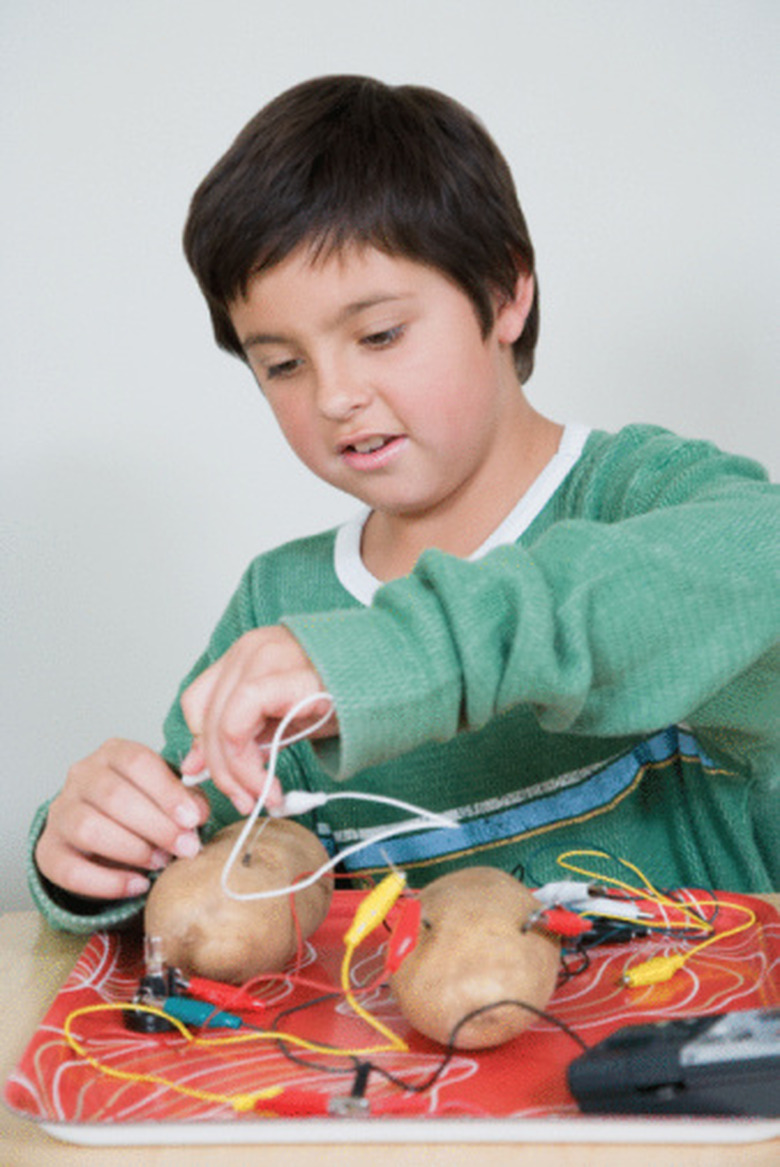How To Use A Multimeter To Test The Electrical Charge In Fruits & Vegetables
A simple and popular experiment for students is to test the electrical charges produced from various fruits and vegetables. In fact, the fruit or vegetable does not create a charge at all. The combination of using two different metals and the conductivity of the juice of the fruit or vegetable allows for current to flow. Each fruit and vegetable will have different conductivity levels which makes some fruits and vegetables better able to conduct electricity than others. Using a multimeter is the best way to test and compare each fruit and vegetable.
Step 1
Place one copper electrode and one zinc electrode into the fruit or vegetable. Begin testing with the electrodes placed at opposite ends as far apart as possible. The zinc and copper metals will react with the juices in the fruit or vegetable to create a battery.
Step 2
Connect the leads from the electrodes to the multimeter. Make sure the multimeter is set to a voltage reading. Record the data. Repeat the experiment with the same fruit or vegetable multiple times to obtain an average for voltage produced.
Step 3
Place the leads closer together and reconnect to the multimeter. Record any changes in the voltage produced by bringing the leads closer together.
Step 4
Repeat Steps 1 through 3 for each fruit and vegetable selected for the experiment.
Things Needed
- Copper electrodes
- Zinc electrodes
- Multimeter
- Various fruits and vegetables
TL;DR (Too Long; Didn't Read)
Different readings may also be taken during testing including resistance, which is measured in Ohms, and current produced which is measured in amps or milliamps.
Cite This Article
MLA
Carpenter, Michael E. "How To Use A Multimeter To Test The Electrical Charge In Fruits & Vegetables" sciencing.com, https://www.sciencing.com/use-electrical-charge-fruits-vegetables-8102592/. 24 April 2017.
APA
Carpenter, Michael E. (2017, April 24). How To Use A Multimeter To Test The Electrical Charge In Fruits & Vegetables. sciencing.com. Retrieved from https://www.sciencing.com/use-electrical-charge-fruits-vegetables-8102592/
Chicago
Carpenter, Michael E. How To Use A Multimeter To Test The Electrical Charge In Fruits & Vegetables last modified March 24, 2022. https://www.sciencing.com/use-electrical-charge-fruits-vegetables-8102592/
